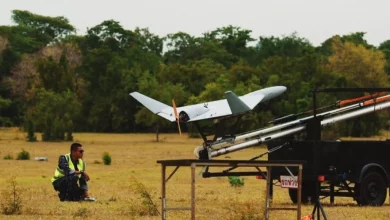Russia ships S-300 air defense missiles from Syria to Crimea

Russia has shipped a battery of S-300 anti-aircraft missiles from Syria to a Russian port near Crimea, according to an Israeli satellite imaging company, in an apparent attempt to bolster its air defenses in the war with Ukraine.
ImageSat International (ISI) captured pictures showing the presence of the S-300 anti-aircraft battery at Masyaf, Syria in April, and the empty site left behind on Aug. 25 after the hardware was shipped to the port of Tartus.
Separate images showed the battery components on a dock at Tartus between Aug. 12 and 17. By Aug. 20 they had gone, and ISI concluded they had been transferred to a Russian vessel, the Sparta II, which left Tartus for the Russian port of Novorossiysk.
Data from Refinitiv Eikon show the Sparta II is currently in Novorossiysk, having arrived via Türkiye’s Dardanelles Strait.
The Russian Defense Ministry declined to comment.
The Montreux Convention gives Ankara the power to regulate the transit of naval warships and to close the straits to foreign warships during wartime and when it is threatened.
The pact, however, has a clause exempting ships returning to their registered base.
Türkiye closed its straits to ships of countries at war after the Russia-Ukraine war broke out, but open sources have been suggesting that Russia continues its shipments via civilian vessels.
Russia has maintained a military presence in Syria since 2015, when it intervened in the civil war there on the side of regime leader Bashar al-Assad.
If confirmed, the transfer would indicate a significant Russian move to bolster air defenses near the theater of war in Ukraine, where its forces have sustained damaging attacks in recent weeks.
In one such incident, eight Russian combat planes were destroyed this month in a series of explosions at an airbase in Crimea. Ukraine has declined to say whether and how it carried out the attacks.
ISI images showed the radar component of the S-300 battery had been moved separately from the same Masyaf base to the Hemeimeem air base on the Syrian coast, north of Tartus.
The company’s analysts said they assessed that the size and weight of the radar made it unsuitable for shipment by sea, and may require an airlift by an Ilyushin-76 aircraft from Hemeimeem back to Russia.





